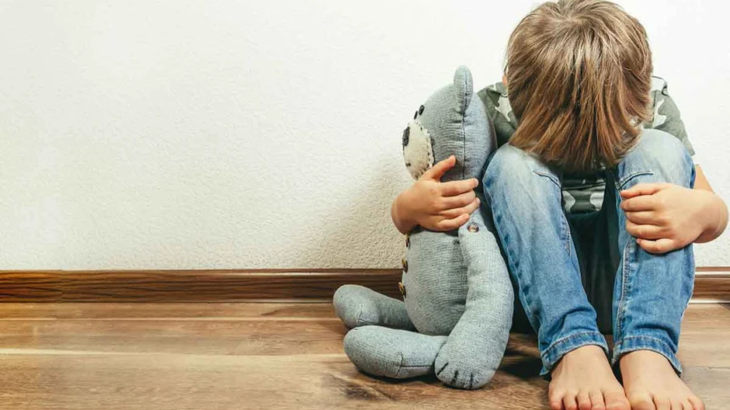The busy life we lead nowadays, where pressures and uncertainties seem to be very close to us, makes children sometimes have moments of anxiety. While it is perfectly normal for kids to feel worried or nervous from time to time, persistent and overwhelming feelings of anxiety in children could indicate a very sensitive issue that needs attention and understanding.
The Causes Of Anxiety In Children
The causes of anxiety in children are complex and can originate from a combination of genetic, environmental, and psychological factors. Some common triggers include:
- Genetics: Children with a family history of anxiety disorders may be more predisposed to experiencing anxiety themselves.
- Environmental Factors: Stressful life events such as moving to a new school, experiencing a significant loss, or facing academic pressures can contribute to the development of anxiety in children.
- Trauma: Exposure to traumatic events or ongoing stressful life situations can significantly impact a child’s mental well-being and lead to the development of anxiety.
Symptoms of Anxiety in Children
Before dismissing a child’s diagnosis of anxiety, it is very important to understand that not all children exhibit all the symptoms. Many of them may have only a few of the symptoms, and also they may have different symptoms at different times. It is important to look at a holistic picture and observe if the child is presenting with significant distress due to any of the symptoms for a prolonged period, more than 2 weeks or so.
Here’s a list of common symptoms of anxiety in children:
- Excessive worrying and negative feelings about various aspects of life, including school, family, friends, or future events.
- Restlessness or feeling on edge the majority of the time.
- Irritability or moodiness, often without a clear cause.
- Difficulty concentrating or staying focused, which may affect academic performance.
- Avoidance of certain activities, situations, or places that trigger anxiety.
- Complaints of physical symptoms such as stomachaches, headaches, muscle tension, or fatigue, often with no apparent medical cause.
- Trouble falling asleep, staying asleep, or experiencing frequent nightmares.
- Seeking excessive reassurance from parents, teachers, or other trusted individuals.
- Social withdrawal or reluctance to engage in social activities with peers.
- Exhibiting insecurity or a strong desire to stay close to caregivers.
- Experiencing sudden and intense panic or fear, sometimes resulting in physical symptoms like sweating, trembling, or rapid heartbeat.
- Changes in eating habits, including loss of appetite or overeating.
- They could express feelings of helplessness or hopelessness.
- Physical symptoms may become more apparent during stressful situations or events.
Additionally, some symptoms may overlap with other conditions. So it’s crucial to consult with a healthcare professional for an accurate diagnosis and appropriate support.
Types of Childhood Anxiety
Anxiety disorders in children can be of many types, each having its own set of symptoms and difficulties. Some common types include:
- Generalized Anxiety Disorder (GAD): GAD in children is marked by excessive worry and fear for unnumbered things that occur daily.
- Social Anxiety Disorder: This type of anxiety is about social situations, usually due to concerns about being seen or humiliated.
- Separation Anxiety Disorder: In Separation anxiety, children show extreme distress when separated from their parents or primary caregivers. This makes it quite difficult for them to participate in school or other activities independently.
Managing and Treating Childhood Anxiety
Anxiety in children can be terrifying and painful for both the child and their caregiver. There are various strategies and treatments for anxiety in children available to help them cope and thrive:
- Therapy: Cognitive-behavioral therapy (CBT) is often an effective approach for treating childhood anxiety, helping children recognize and change negative thought patterns and behaviors.
- Medication: In some cases, medication can be helpful to manage symptoms of anxiety, particularly for children with severe or persistent anxiety disorders. Medication can be considered for a short period, especially in cases where physical symptoms of anxiety are overwhelming. However, this is usually considered a secondary option after therapy.
- Lifestyle Modifications: Encouraging healthy habits such as regular exercise, sufficient sleep, a nutritious diet, and relaxation techniques can be crucial in managing anxiety in children.
- Parental Support: Providing a supportive and understanding environment at home, along with open communication channels, can help children feel safe and secure as they navigate their anxiety.
Conclusion: Nurturing Resilience in Children
Anxiety in children is a complex and nuanced issue but with the right support and interventions. Children can learn to manage their anxiety effectively and lead fulfilling lives. Always seek child psychiatrist help in recognizing the signs, understanding the root causes, and implementing appropriate strategies for managing and treating anxiety. We can help our children build resilience and thrive in an ever-changing world. Let’s foster an environment where children feel empowered to express their emotions and seek help, paving the way for a brighter and more resilient future.
